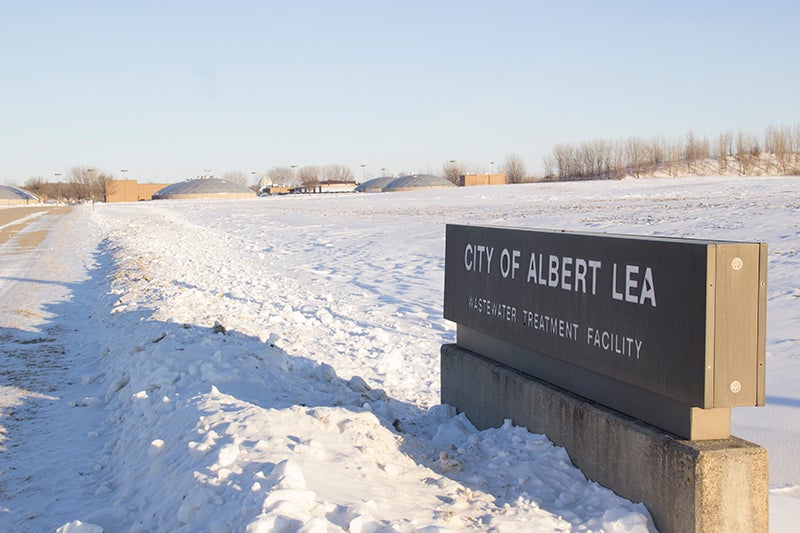Estimate for wastewater treatment plant increases almost $13 million due to inflation, could even rise higher
Published 11:46 am Tuesday, October 25, 2022

- Upgrades to Albert Lea’s wastewater treatment plant are expected to cost almost $80 million. Tribune file photo
|
Getting your Trinity Audio player ready...
|
Estimates for Albert Lea’s new wastewater treatment plant have jumped to $72.69 million, a result of inflation, the consultant hired to lead the project said in an update Monday to the Albert City Council.
“We anticipate that as that continues to be phased out and inflation goes up, it could go up to 80 or higher,” said Kris Swanson with Bolton & Menk. “I don’t think that’s a function of wastewater treatment. I mean that’s the milk at the grocery store, the gas at the pump. I mean, inflation is running rampant right now, and unfortunately, our cost estimates aren’t immune from that.”
Albert Lea Mayor Vern Rasmussen Jr. urged community members to get involved and to contact their legislators and the governor’s office.
“This is the biggest issue that’s faced Albert Lea in a long time,” Rasmussen said. “It’s imperative that not only the seven members up here and staff are involved in this process, it’s important to all of us. As citizens of this city, I ask you all to be involved in this process as we move forward. This is the one thing in all the 18 years of doing this, I’m scared of. This makes a big difference to us.”
Rasmussen said several food industries in the community are high water users and they need good sewer and water services.
He said it is incumbent on the whole community to stand up and make sure the Legislature understands the importance. With the state mandating half of the project, he also said it is important the state take responsibility for their mandates and help communities forward.
City staff are working to formulate the monetary impact the project will have on residents in the event no state funding is available.
Swanson said the city has worked on plans for the wastewater treatment plant since 2017, and this summer the firm has been in the middle of preliminary engineering for the project.
Swanson said Albert Lea’s plant is 40 years old and was built in 1981. In addition to the plant having aging infrastructure, the city is facing new regulations from the Minnesota Pollution Control Agency for phosphorus removal at the plant.
City officials lobbied the state earlier this year for $30 million in the state bonding bill, but without a bonding bill passed this year, no state funding has been available. Swanson said additional matching funds from the federal government have also not come through because the bonding bill was not approved.
In Albert Lea’s case, he said he thinks there is a good reason for the city to get the funds because its plant supports many industries. He said the state would be paid back through income tax and sales tax in only a few years by investing in the project.
Swanson said Albert Lea’s project is ranked No. 1 on the Clean Water Revolving Fund list and No. 14 overall on the project priority list.
In addition to updating on the estimated cost, Swanson gave more in-depth information on plans for the project through the firm’s preliminary engineering process.
The firm is recommending a change from its previous recommendation on how the plant should treat biosolids. Instead of going with a lime pasteurization process, it is now recommending a heat drying procedure, which through high temperature incineration would dry the biosolids until they are a dirt or dust.
Part of the recommendation comes as the MPCA is now studying levels of per- and polyfluoroalkyl substances at plants —known as PFAS — which are cancer-causing agents found in products such as nonstick cookware, carpets and even upholsteries.
The state agency is determining which communities are high-risk for the chemicals, and depending on the risk level the city is given, the city would need to work with industries to figure out how to reduce those chemicals in their products.
City Engineer Steven Jahnke said he hoped the city was less than the threshold but did not want to predict where the city would come back on its levels for the chemicals.
The chemicals were found to have leached into Lake Elmo from the 3M plant nearby.




